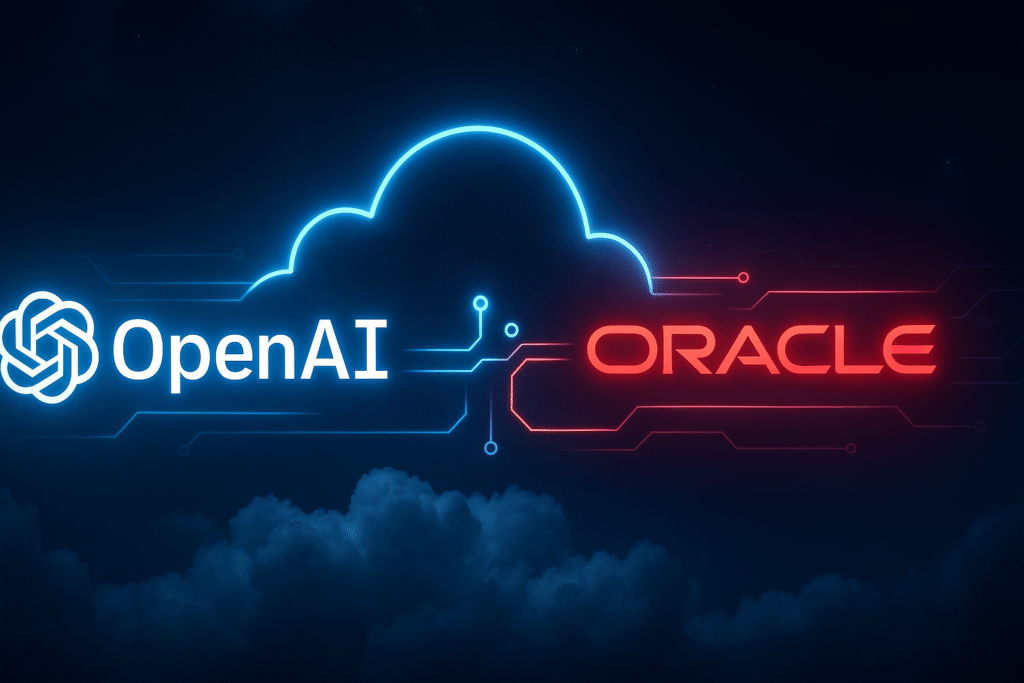The AI Arms Race Escalates: OpenAI’s Historic Bet on Oracle Shakes Up the Cloud Landscape

In a move that signals the next major front in the artificial intelligence war, OpenAI has reportedly inked a monumental cloud computing deal with Oracle. This isn’t just another vendor contract; it’s a strategic masterstroke that redefines alliances in the tech world and underscores the insatiable, trillion-dollar appetite of the AI industry for computing power.
For years, the cloud market has been dominated by the “Big Three”: Amazon Web Services (AWS), Microsoft Azure, and Google Cloud Platform (GCP). OpenAI itself has been one of Microsoft Azure’s most prestigious and valuable anchor tenants. So why would Sam Altman’s company, backed by billions from Microsoft, turn to its rival’s rival?
The answer is simple: scale, sovereignty, and survival.
Beyond Azure: The Need for More Than One Giant
OpenAI’s growth is constrained by one thing above all else: access to massive clusters of advanced GPUs and CPUs to train its increasingly complex models. While its partnership with Microsoft is deep and ongoing, the sheer scale of OpenAI’s ambition—from GPT-5 and beyond to advanced AI agents—requires a multi-cloud strategy.
By bringing Oracle into the fold, OpenAI gains immediate access to one of the world’s largest and most powerful AI supercomputers, built on Oracle’s distinct advantage: its massive clusters of NVIDIA GPUs. This deal effectively gives OpenAI a second, colossal engine room to power its innovation, ensuring it isn’t solely dependent on Azure’s capacity and roadmap.
Why Oracle? Larry Ellison’s AI Gambit Pays Off
On the surface, OpenAI choosing Oracle might seem surprising. However, for those watching Larry Ellison’s relentless focus on AI infrastructure, it’s a validation of a years-long strategy.
Oracle has invested billions in building out its cloud data centers specifically for AI workloads, boasting enormous clusters of NVIDIA Blackwell GPUs interconnected by ultra-fast remote direct memory access (RDMA) networking. They haven’t tried to compete with AWS and Azure on every front; instead, they’ve focused on building the most powerful specialized engine for high-performance computing (HPC) and AI training.
This deal is a resounding endorsement of that strategy. Having OpenAI as a flagship tenant is the ultimate credibility booster for Oracle Cloud Infrastructure (OCI). It proves that even the most demanding AI workloads in the world can run on its platform, a message more powerful than any marketing campaign.
The Strategic Implications: A New Axis of Power
This agreement sends shockwaves through the entire tech industry:
- For Microsoft: This is not a divorce, but a diversification. Microsoft remains a key partner with a board observer seat and a deep integration of OpenAI tech into its Copilot ecosystem. However, it now has to share influence. OpenAI has strategically reduced its dependency on a single provider, giving it more leverage and flexibility in future negotiations.
- For the Cloud Market: The era of the AI “Big Three” is over. Oracle has forcefully cemented itself as a premier-tier AI cloud provider. This deal will encourage other AI startups and enterprises to seriously evaluate OCI, breaking the hegemony of AWS and Azure in high-stakes AI.
- For the AI Industry: It highlights the extreme scarcity of advanced computing power. If the leading AI company, backed by one of the wealthiest tech giants, still needs to seek out additional capacity, it shows that compute will remain the critical bottleneck—and a strategic asset—for years to come.
What’s Next? The Trillion-Dollar Compute Race
The OpenAI-Oracle deal is a symptom of a larger trend: the AI revolution is being built on a foundation of silicon and electricity. The demand for compute is growing at a rate that outstrips even the most aggressive supply projections, leading to a global scramble for chips, data center space, and energy.
This partnership is a historic moment, marking a key inflection point where AI companies are no longer just tenants of cloud providers but are becoming the strategic force that dictates the future of cloud infrastructure itself. The race to build artificial general intelligence (AGI) is now inextricably linked to the race to build the computers that can host it.
One thing is certain: the cloud wars just got a lot more interesting.

